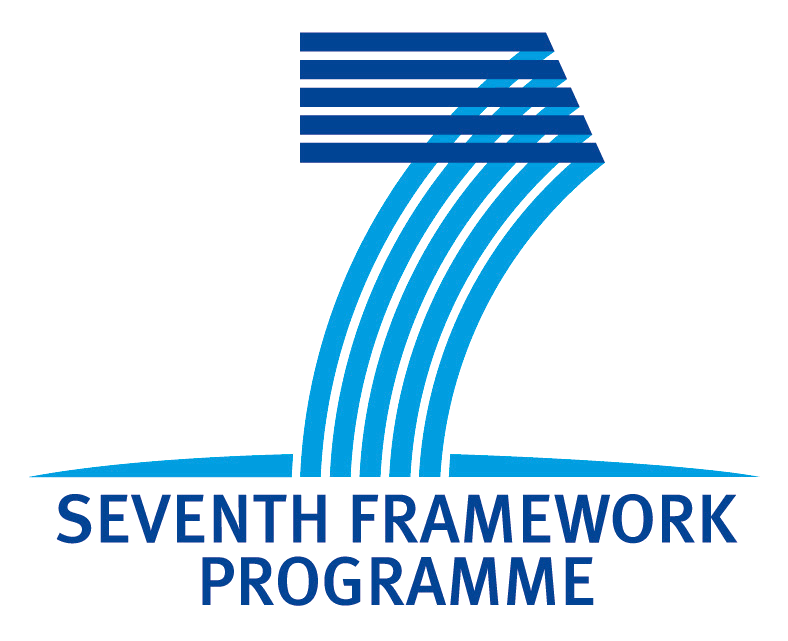WP8 - Museum
WP8: Museum
D8.2 (AR, DD, RE 2012) -->
The museum grammar creates multilingual descriptions from a museum ontology using GF grammar for the verbalization. The GF grammar provides a direct verbalization of the triples and different types of complex discourse patterns: a text generated by the grammar has necessary elements painting, painting type and painter, and as optional information year, museum, colour, size and material. For a detailed description, see D8.2 (Ranta et al. 2012).
An abstract syntax for the direct verbalization grammar can be generated automatically from the ontology. The discourse patterns have been human-generated, and they can be reused for different language versions and for more objects. For example, the type of a complete painting is described in an abstract syntax as following:
cat CompletePainting Painting PaintingType Painter OptYear OptMuseum OptColour OptSize OptMaterial ;
CompletePainting is a type constructor that takes type parameters to construct a type for a painting. A painting from Gothenburg City Museum has a following type:
data GSM940042ObjPainting : CompletePainting GSM940042Obj MiniaturePortrait JKFViertel (MkYear (YInt 1814)) (MkMuseum GoteborgsCityMuseum) (MkColour Grey) (MkSize (SIntInt 349 776)) (MkMaterial Wood) ;
In the concrete syntax all this complexity is hidden. Porting the grammar to a new language requires only writing the concrete syntax. However, the underlying ontology makes sure that the grammar generates only valid descriptions and not random combinations of paintings, painters and other properties.
As of March 2012, the translation of the museum objects and the additional lexicon (painting materials, colours) needs to be done manually. The future plan is to combine tools developed in WP3 to make the lexicon extension automatic, by using multilingual lexicon harvesting from term ontologies or other reliable sources (DBPedia, TermFactory? ).
Evaluation for WP8
D8.2 has promised to increase the coverage from 5 languages to 10 languages, and extend the grammar and the lexicon for at least 5 languages. The GF grammar can be tested continuously, while developing, with the treebank method described earlier in this document. A grammar developer should be fluent in the language she is developing the concrete syntax, and the treebank testing should be thorough. If the testing is done properly in the grammar development phase, there shouldn't be need to have specific translation quality evaluation experiments. The best way to spot problems is through real usage, so UHEL is offering a bug tracking platform, where users can report all kinds of issues, including language errors.
The idea is not to translate existing texts, but to generate descriptions in response to user queries. As described in D8.2,
D8.2: The grammar presented here allows to generate well-formed multilingual natural language descriptions about museum artefacts with the aim of empowering users who wish to access cultural heritage information through different computing devices.
Other question is to evaluate the use of the queries. Currently the grammar has one discourse pattern with optional elements; the variety comes from adding or leaving out some information. One possibility discussed in D8.2 is to include more variety in the generated text. A qualitative evaluation study with non-expert human subjects would serve this purpose. The aspects to test in this experiment would be the ease of querying and whether the results answer the query. However, as long as this plan is not certain, we are not designing any concrete test methods.
A third question is the ease of the grammar writing and the reusability of the grammar -- is it possible for other museums to use the grammar, if they have their own standards? Currently a prerequisite for the museum grammar is an ontology that follows Cidoc-CRM standard. This is an important aspect, if we are to make MOLTO tools used outside the test cases within the project. The step from a specified format to verbalizations are well defined, now it should be given more thought how to cover the first step of the process: whichever type of museum database to a CRM format. We could, as a part of evaluation, interview some domain specialists and survey the needs and interests for this kind of system, and whether the first step is a big enough threshold to prevent them to use the system.
- Printer-friendly version
- Login to post comments
- Slides
What links here
No backlinks found.


